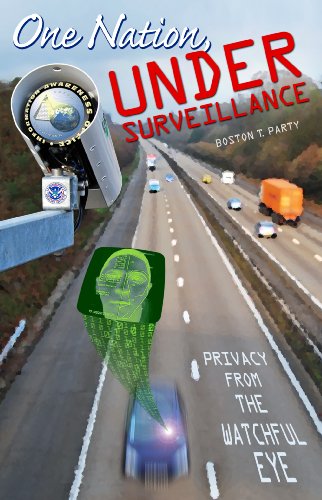Visual Recognition technology is becoming very powerful and easily has the capacity to perform facial recognition of an entire crowd. They can probably see you reading the How To Vanish book from space so scanning a crowd is an easy feat. Facial biometrics can link the faces in an otherwise anonymous crowd with the vast transactional databases that are maintained on almost everyone. Your physical presence in a particular location, detected by face recognition technology, would be yet another data point in the vast digital dossier on you. Such visual recognition can pose serious threats if misused to anyone who wants to participate in the political process, peaceably assemble, participate in religious observance or in many other aspects of life. So I thought you might want to know how to fool facial recognition technology.
Visual Recognition Technology
The fact that facial biometric technology exists is not the problem. It is the use of technology, such as visual recognition, that can have serious implications. Use of face recognition technology is not new. It’s use was first made public several years ago when it was used to scan the crowd of the Super Bowl in Tampa Florida. At that time face recognition was not very good and returned a lot of false positives, identifying individuals as someone they weren’t, as well as missing other people the system was designed to detect. Such a deployment of visual recognition in its unrefined state may have caused the public to regard the technology as harmless. Since that first deployment, the technology has improved and is now used for airport security and in other places where there are a lot of people to spy on and very little time.
Fool Facial Recognition Technology
 How to Disappear: Eras...
Best Price: $2.80
Buy New $8.51
(as of 05:35 UTC - Details)
How to Disappear: Eras...
Best Price: $2.80
Buy New $8.51
(as of 05:35 UTC - Details)
Adam Harvey undertook a very interesting project as part of his doctoral thesis at NYU to find ways to fool facial recognition. Makeup was applied to faces in these patterns to obscure facial features. The researcher relied on the algorithms that the software used to recognize faces. Knowing the algorithm allowed him to manipulate and distort the most important reference points to avoid detection by the facial biometrics.
 One Nation, Under Surv...
Best Price: $3.80
(as of 06:20 UTC - Details)
One Nation, Under Surv...
Best Price: $3.80
(as of 06:20 UTC - Details)
Limitations of Facial Recognition
Keep in mind that this is the first study of its kind so there are some limitations in what is now known. For example, the software does not even recognize that a face is present at all when using these patterns. The study does not address whether there are ways to allow the software to recognize a face without being able to determine which face it is. The contrast that must be used is also not reported. Do the patterns require the use of black and white makeup, or can we use the colors of our favorite sports teams? Are more subtle shades useful at avoiding detection that might not draw as much attention as a face painted like Gene Simmons? Hopefully others will follow up and find the answers to these questions.
Implementing Visual Recognition Disruption
For now, if you follow the patterns as presented, it is likely that your face will not even be recognized by facial recognition software. I would not recommend testing new techniques or even using proven techniques in any heavily regulated areas, such as airports. Even Gene Simmons might have difficulty getting through airport security with face paint. But who is to keep you out of the Superbowl with Chargers blue and gold displayed proudly? Even if the Chargers aren’t playing.
Conclusion
Visual recognition technology is advancing quickly and becoming a very powerful tool to monitor a higher number of people, more often, at a lower cost. Keep your facial biometrics to yourself and stay out of the transactional databases, avoid surveillance cameras more effectively, and keep the paparazzi guessing. If there have been any interferences with your constitutional rights due to the use of facial recognition technology, you will want to talk to a lawyer.
Reprinted with permission from How to Vanish.
November 30, 2010





